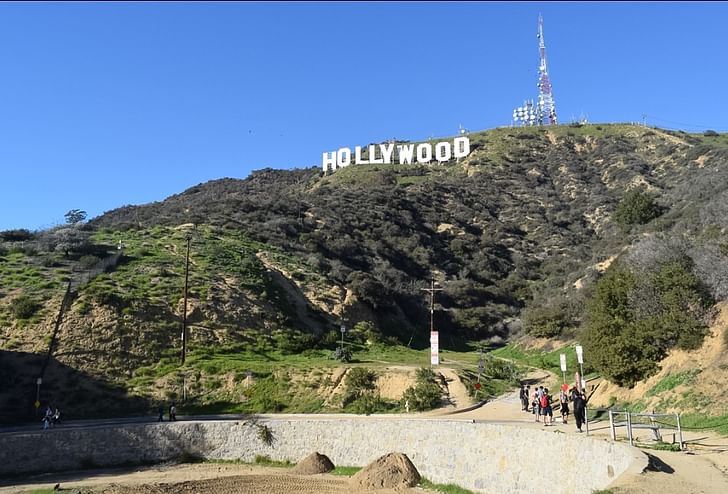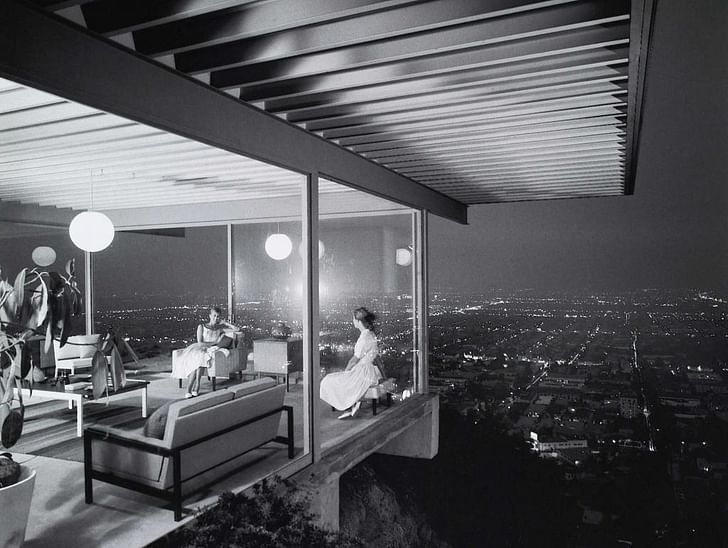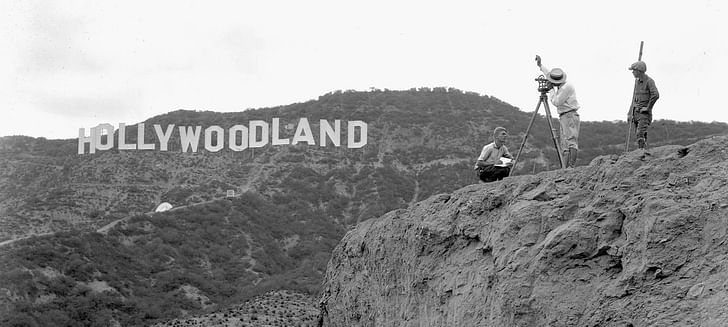

What is the future of single family housing? For Nick Graham of Arch Out Loud and property owner Steve Alper, the tract of land just below the Hollywood sign offers designers a powerful opportunity to (re)define sustainable design and future living.
It's fitting that a competition to reimagine the single family home is being held in the one place in the world that specializes in reinvention and rebranding: Hollywood. And the competition’s not being held in just any old lot in Hollywood, but in its prime iconic location, just beneath the titular sign. Here, amongst the drought-resistant brambles and security-camera swept hills, there is a patch of undeveloped land that is now serving as the site for a global design prompt that asks participants to “to design a house of the future which demonstrates the use of innovative technology, integrative environmental strategies, and capitalizes on the iconic prominence of its site beneath the famed Hollywood sign.”

The sign’s rich history—and its significance as a constant place marker in a seemingly ephemeral place—makes it perfect for a competition that seeks to redefine a residential paradigm. It's rooted enough to be practical, but changeable enough to accommodate new ideas. Originally constructed of wooden if nine metal letters can act as shorthand for the world’s imagination, what kind of attention could a well-designed house garner?letters fifty feet tall, the sign was in erected in 1923 as an advertisement for the housing development of “Hollywoodland.” The last four letters were removed when the Hollywood Chamber of Commerce voted in 1949 to adopt it permanently as a reflection of the larger district. By the 1970s, the original wooden signage had decayed so badly that one of the letter “O’s” had collapsed, necessitating a change. Funds were pooled and the sign was eventually remade, in slightly shorter lettering, of white-painted metal. So while the natural setting and climate makes this site ideal for investigating indoor/outdoor living, the spot is also charged with symbolism: if nine metal letters can act as shorthand for the world’s imagination, what kind of attention could a well-designed house in this spot garner?

The initial idea for the competition began after the land was purchased by Steve Alper, who according to Arch Out Loud’s Nick Graham “thought about it as a story. He always thought: how can I make the most of this site? How can it be more of a story, more of a piece of L.A. in the hills?” Alper reached out to Graham, who in coordination with The Last House on Mulholland subsequently organized a jury of some of the city’s most iconoclastic designers and thinkers, including Thom Mayne, Heather Roberge, Tom Kundig, Peter Zellner, Jimenez Lai, and Archinect’s own Paul Petrunia. This jury will help select a design that will hopefully not only encapsulate the burbling potential of Los Angeles, but will also serve as a statement “for sustainable design and future living.”

Like many Hollywood schemes, the competition itself worries less about technical limitations and focuses more on grand possibilities. In this case, both Graham and Alper want to encourage designers to let their imaginations roam. “It’s a conceptual competition to motivate what can be built on this site,” Graham explains. “We’re not telling people to follow set-backs. We don’t want people to get too ingrained in the really technical details. Steve Alper owns the site, but he doesn’t want people to design for him, he wants people to go at this with a really open mind.”
When asked about the relationship of the competition to Los Angeles’ current housing situation, specifically in regard to the housing crisis and homelessness, Graham focuses on sustainability, and its wider benefits for society. “We sustainability is vital think sustainability is vital, especially as people focus on what are we doing tomorrow. Los Angeles is such a great case study for that in terms of the water crisis and energy usage. What are the things people are getting into now that are going to be mainstream going forward? In the brief, we address the new version of the construction industry with 3D printing and assembling on site and prefab. Somebody might focus on ‘how do we construct this house’ as opposed to what it looks like; how do you get it completely off the grid?”

Of course, the competition is as much about designing for the changing nature of public and private space as it is about creating a workable, even progressive, template for the future. The contemporary nature of work, and its subsequent premium on geographical flexibility, plays a big role. “How do families and single individuals interact in a home differently? Is the home as permanent as it is today? “It’s a conceptual competition to motivate what can be built on this site,” Graham explains Do the residents have a home base as opposed to living in multiple cities? We’ve just tried to ask the right questions.” Graham also is looking forward to seeing how spaces are emphasized depending on the perceived nature of its occupants. “Some people really might like to entertain,” he theorizes. “Or a kitchen might be a centerpiece of the home, or an entertainment area. Maybe there are hobbyists, or they want workshops, or they are artists and they use their homes as a gallery. We’re expecting different fields of entries. We’re excited to group those together and see how some participants took on those challenges.”
Registration for the contest closes on February 9th; the deadline for submission of entries is February 10th, and winners will be announced March 4th. As Graham notes about those who have already entered, “People from all over the world are registered so far. There’s great participation from schools and professional firms in Los Angeles. Ultimately, we’re on the border of the Hollywood Sign. And the site can be a platform for what we’re trying to achieve.”
Julia Ingalls is primarily an essayist. Her work has appeared or is forthcoming in Slate, Salon, Dwell, Guernica, The LA Weekly, The Nervous Breakdown, Forth, Trop, and 89.9 KCRW. She's into it.
No Comments
Block this user
Are you sure you want to block this user and hide all related comments throughout the site?
Archinect
This is your first comment on Archinect. Your comment will be visible once approved.